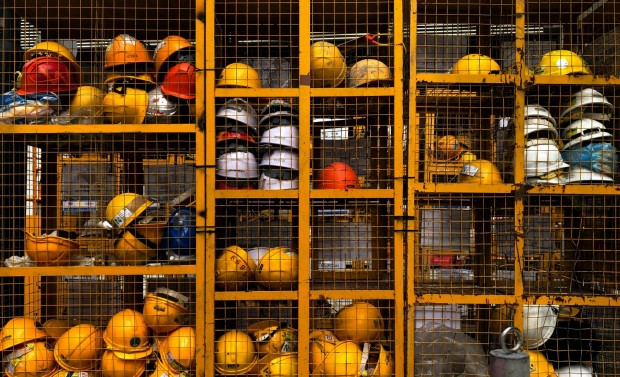When working on construction sites, workers are protected from various hazards that could cause injury by wearing protective gear. As a result, workers typically wear hard hats or safety helmets to protect themselves from falling objects. However, which of these two safety gears is more effective?

(Photo : Unsplash/Pop & Zebra )
What are Hard Hats and Safety Helmets?
Hard hats, also known as industrial helmets, are constructed from molded plastic or resin and may feature fiberglass or polymer-reinforced outer skin. Because of their greater endurance, hard hats are favored over helmets when working in environments with high temperatures, electrical operations, or close to metal pylons, exposed piping, and other sharp items.
On the other hand, the primary function of construction safety headwear is to shield the wearer's head from various hazards, including falling objects, impacts caused by stationary objects striking the head, and penetration by sharp or pointed objects. In comparison to conventional hard helmets, they are more pleasant to wear, consisting of lightweight materials such as plastic, and are easier to put on the head.
Also Read: Saudi Arabia's Ambitious 106-Mile 'The Line' Shrinks to 1.5 Miles Amid Financial Challenges
Benefits of Using Hard Hats vs. Safety Helmets
Comfort
Hard hats, traditionally made of a dome-shaped shell, are designed to protect from falling objects. Although they satisfy the criteria for impact and penetration, they generally do not offer protection against side impacts unless they have obtained ANSI Type 2 certification. Moreover, safety helmets, which are frequently modeled after climbing helmets, are the type of helmets that are designed to provide more extensive protection. These products might have a more substantial outer covering that encases the entire head, including the sides and temples, offering enhanced protection against side impacts.
Protection
Conventional hard helmets have a suspension system that allows for a customized fit; however, their design can be cumbersome and uncomfortable, mainly when worn for an extended period. In general, safety helmets offer a more comfortable and secure fit since they are designed to sit lower on the head and have more adjustable suspension systems.
Fit
To offer employees increased comfort while carrying out various daily responsibilities, safety helmets are now designed to resemble cycling and climbing headgear. Those who wear safety helmets have their heads supported by a suspension system to rest their heads on a comfort pad. In contrast, hard helmets have a suspension mechanism similar to a webbed ribbon, but it does not guarantee they will not fall off the head. Nevertheless, the webbed suspension creates additional airflow between the person's head and the top of the hard hat or shell. As part of the impact requirement, this gap is there to absorb any impacts, penetrations, or falling items that may occur.
Customization
It is possible to personalize hard hats and safety helmets by utilizing specific systems that enable users to connect accessories such as visors, face shields, headlamps, and ear protection safely and securely. While there are some limitations to how hard hats can be personalized, Adam Kerzel, the Milwaukee Tool PPE Customization and Head Protection product manager, has reportedly observed workers attempting to personalize their protective equipment (PPE).
Related Article: Working in Confined Spaces: 5 Construction Safety Tips From OSHA to Avoid Hazards







